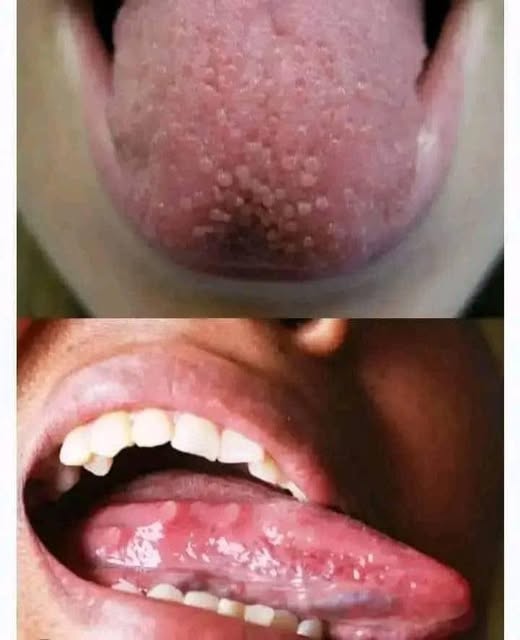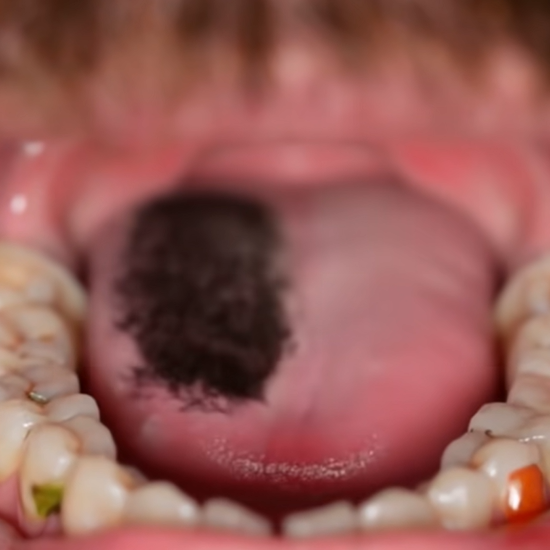1. White Coating on the Tongue
Possible Cause: Oral yeast overgrowth (often called oral thrush)
Why It Happens: Can occur due to reduced oral hygiene, antibiotic use, or a temporarily weakened immune system.
Signs to Notice:
- Thick white or yellowish layer on the tongue
- Mild burning or discomfort
- Unusual taste or bad breath
Self-Care Tips:
- Gently brush the tongue twice a day
- Rinse with saltwater or baking soda solutions
- Limit sugar and yeast-heavy foods
- Include probiotic foods like yogurt
- Maintain overall oral hygiene and hydration
2. Red, Bald, Shiny Tongue
Possible Cause: Vitamin deficiencies, particularly B12, folic acid, or iron
Why It Happens: May result from insufficient dietary intake or absorption issues.
Signs to Notice:
- Smooth, glossy red tongue
- Sensitivity or mild burning, especially with spicy foods
- Possible fatigue or other mild anemia-related signs
Self-Care Tips:
- Eat iron-rich foods like spinach, lentils, and lean meats
- Include B12 sources such as eggs, dairy, and fish
- Consider a B-complex supplement after consulting a healthcare provider
- Limit alcohol and irritating foods if discomfort occurs
3. Cracked or Fissured Tongue
Possible Cause: Often harmless and hereditary; sometimes linked to dehydration or other conditions
Why It Happens: Natural variations, sometimes associated with geographic tongue or skin conditions like psoriasis.
Signs to Notice:
- Grooves or cracks on the tongue
- Rare discomfort unless food particles get trapped
- Map-like patterns in some cases
Self-Care Tips:
- Gently brush the tongue to remove debris
- Stay well-hydrated
- Avoid overly acidic or spicy foods if irritation occurs
- Usually no medical treatment is needed unless pain develops
4. Purple or Dark Tongue
Possible Cause: Reduced circulation, mild cyanosis, or vitamin B2 deficiency
Why It Happens: Can result from cold exposure, respiratory conditions, or dietary insufficiencies.
Signs to Notice:
- Purple or bluish tongue
- Cold extremities
- Occasional fatigue or lightheadedness
Self-Care Tips:
- Keep warm and improve circulation through gentle exercise
- Focus on proper breathing, especially if snoring or sleep apnea is present
- Eat a balanced diet with enough B vitamins
- Seek professional advice if symptoms continue
When to Consult a Healthcare Professional
- Symptoms last more than 1–2 weeks
- Pain, swelling, or difficulty eating, speaking, or breathing
- Accompanied by fever or other systemic issues
General Tongue & Oral Health Practices
- Brush your tongue daily
- Stay hydrated throughout the day
- Consider using a tongue scraper
- Avoid smoking and limit alcohol
- Visit your dentist regularly (every 6 months)



